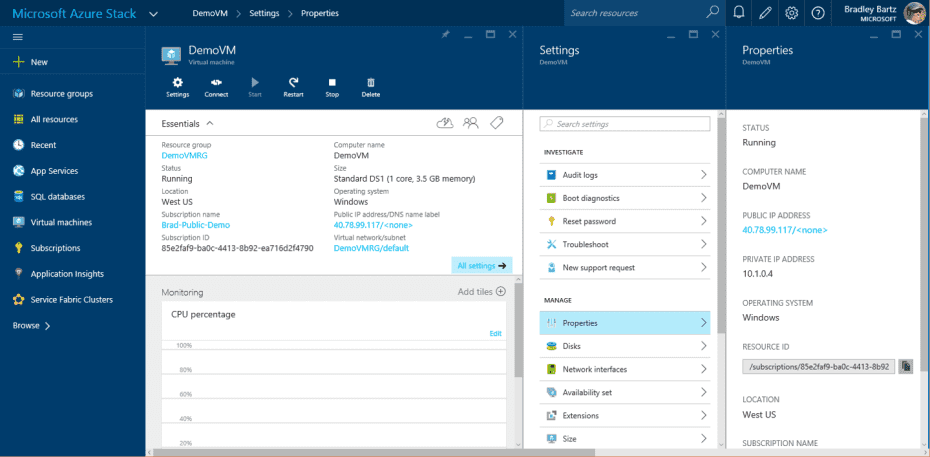Starting Friday, enterprises that see the benefits of Microsoft’s Azure cloud platform — but prefer to keep their data and services on premises — will have a new way to get both through the first technical preview of Microsoft’s Azure Stack.
First announced in the spring during Microsoft’s Ignite 2015 conference, Azure Stack is being billed as a way for customers to bring Azure to their own data centers without having to worry about the public cloud’s potential impact on concerns like data sovereignty or regulatory compliance. Rather than use Azure’s public cloud model, companies can deploy Azure Stack as part of a hybrid cloud approach, according to Microsoft.
In fact, companies that have already used Azure won’t encounter much of a learning curve with Azure Stack. Both feature the same portal and standardized architecture, and share many of the same tools for DevOps, Microsoft said. Each also uses an application model based on Azure Resource Manager, which lets developers handle applications on either Azure or Azure Stack in the same way.
‘On-Ramp’ to More Azure Services
Al Gillen, program vice president for servers and system software at the analyst firm IDC, told us it makes sense for Microsoft to roll out Azure Stack as a kind-of “on-ramp” to additional Azure services down the road.
By appealing to customers that, for now, might be reluctant to move away from their on-premises data centers, Microsoft’s Azure Stack also serves as an indirect pre-emptive strike against competing public cloud services like Google and Amazon Web Services, Gillen said.
In other words, companies that in future might want more of a presence on the public cloud might be more likely to choose Azure if they’ve already grown accustomed to using Azure Stack.
In light of the rapid adoption of cloud services, that’s a market Microsoft should have already targeted earlier, Gillen noted. “It would have been smarter if they had done it a year ago.”
In May when Microsoft announced Azure Stack, Natalia Mackevicius, partner group program manager, noted that the offering represents “a significant milestone in helping our customers meet their agile development needs while providing the control corporate IT requires.”
More Technical Previews To Come
Friday’s release will be the first of a number of technical previews that Microsoft plans to roll out for Azure Stack over time. Future previews will add more services and content for users, including OS images and Azure Resource Manager templates.
As it continues to roll out new services for Azure Stack, Microsoft said users will also be able to take advantage of the hundreds of Azure applications and components currently available through the GitHub repository.
CTO Mark Russinovich (pictured above) and Jeffrey Snover, Microsoft’s chief architect for enterprise cloud, are scheduled to provide more details about the new Azure Stack offerings during a Webcast on February 3.
According to the hardware requirements revealed by by Snover in a blog post last month, Azure Stack users will need a data center system with at least 12 physical processor cores, 96 GB of RAM and a Hyper-V enabled BIOS with a minimum of four SSD or HDD disks with 140 GB of capacity each.







